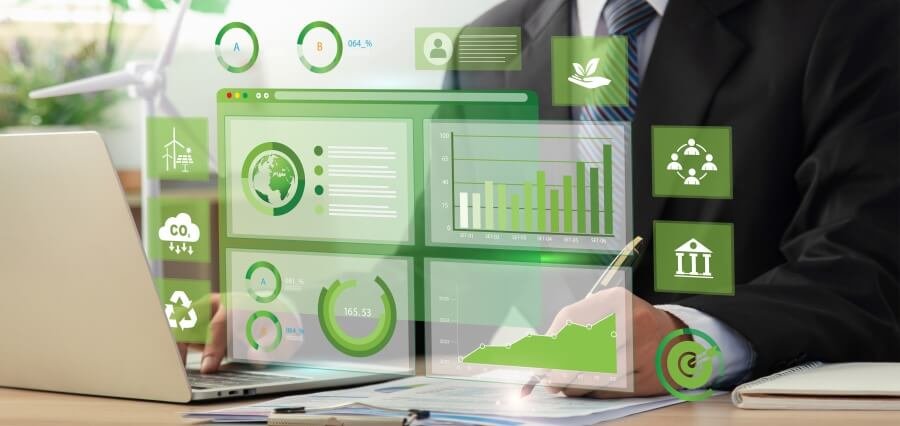In the last few years, the importance of sustainability and green technology in business operations has increased significantly. Businesses around the world are embracing these practices within their organizations due to requirements from the environment and consumers for responsible practices. Organizations can create a positive impact and profitable growth over the long term by focusing on renewable energy, reducing waste and proper management of sustainable resources.
Explore how sustainability and green technology in business can shape a better future for your organization and the world.
Key Components of Sustainability and Green Technology in Business
Sustainability and green technology in business refer to a collection of practices meant to reduce the environmental impact of a business while increasing operational efficiency. The main components include:
- Adoption of Renewable Energy: Businesses are increasingly adopting renewable energy sources, such as solar, wind, and hydroelectric power. This reduces reliance on fossil fuels and lowers greenhouse gas emissions.
- Energy Efficiency: Install energy-efficient systems, such as LED lighting and smart HVAC systems, to help save electricity consumption, thereby saving costs and the environment.
- Waste Management: Recycling programs and waste reduction are part of the sustainability process. Companies can implement circular economy principles by reusing materials and designing products that avoid waste.
- Sustainable Supply Chain: Most organizations are partnering with suppliers who emphasize sustainability. All aspects of manufacturing will, therefore, be made according to the green ideology.
- harvesting rainwater consumption of water with innovative technologies such as harvesting rainwater and recycling water contributes towards sustainable operations within organizations that are highly water-using.
Benefits of Business Integration with Sustainability and Green Technology
There are many benefits to integrating sustainability and green technology into business practices:
- Cost Efficiency: Energy-efficient technologies and renewable energy sources can lead to significant long-term savings on utility expenses. For example, Tesla’s Gigafactory, powered by renewable energy, shows how green initiatives can also be economically beneficial.
- Improved Brand Image: Those firms that believe in environmental responsibility can attract the consumer. Organizations like Patagonia have built their brands on sustainability, gaining the customer’s trust and confidence.
- Reduced Regulatory Risk: Governments enforce strict environmental laws. The firm’s ability to ensure sustainability can help it maintain compliance with those regulations, lowering the chances of fines and loss of operations.
- Competitive Advantage: Green initiatives create a competitive edge in the market. For instance, Unilever’s Sustainable Living Plan has carved out a unique position for the company, and it is distinctly different from others.
- Employee Engagement: Committing to sustainability provides a healthy work environment. Employees are satisfied with working for organizations that take care of the planet, thereby leading to more job satisfaction and motivation.
Examples of Sustainability and Green Technology in Business
Some companies have managed to integrate sustainability and green technology into their business. The examples include the following:
- Google Carbon Neutrality: Google became carbon neutral in 2007 and has continued investing in renewable energy projects to power its data centers. Google’s focus on sustainability is an example to other tech companies.
- IKEA Circular Economy Model: The company will become a fully circular business by 2030. They source sustainable materials and offer their customers an opportunity to get the old furniture back for recycling purposes.
- Starbucks’ Water Conservation: They have implemented low-flow faucets in their stores, and their target is a reduction of 50% of the water usage in 2030.
- Apple Renewable Energy Projects: It has powered 100% of all its facilities with renewable energy and works to reduce suppliers’ carbon footprint as well by introducing new standards within the electronics industry.
- Sustainability Goals by Walmart: It has very aggressive goals, such as zero waste from its operations in the United States and Canada and renewable energy projects to generate 50% of its energy needs.
Conclusion
Sustainability and green technology in business are no longer optional; they are the only way to ensure long-term success. By embracing practices such as renewable energy adoption, waste management and sustainable supply chains, companies can make a tangible difference for the planet while reaping substantial benefits. The examples of industry leaders like Google, IKEA, and Apple prove that integrating sustainability into business strategies is both feasible and impactful.
If you’re considering adopting these practices, now is the time to act.




